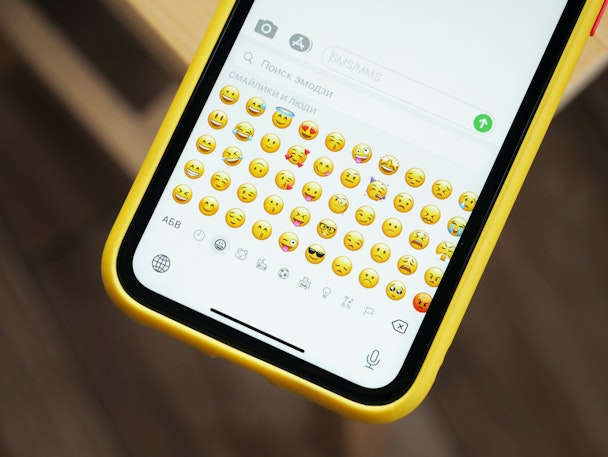A sign of the times: how luxury brands can reach modern consumers with emojis
The emoji is a language everyone can understand. Pre-literate children as young as toddlers can snatch a parent’s phone and create symbol-sentences and messages that make some sense. My 80-something grandmother taps away on her iPad, giggling to herself as Apple suggests the relevant emojis to match the words she types in emails to friends and family. The results are often hilarious.

Keko anticipates the potential and prowess of emojis in advertising
The digital high street is littered with heart and flower symbols, with fashion brands such as Missguided and Shein having long ago adopted emojis into their tone of voice, social media and EDM copy. FMCG brands are also comfortable and confident in its usage, with the likes of Sprite, Nestlé and Dove regularly using emojis in social posts.
Luxury emojis
Can emojis ever feel high-brow or luxury? Versace launched their ‘emoji app’ in 2016, and Chanel created their own set of emoji stickers in 2017. These didn’t catch on for long though, acting more as PR stunts than as a welcoming of the emoji lexicon into their house styles.
Yet by using emojis authentically, brands have the potential to master the intersection between youth and luxury culture; to communicate in a way that transcends language barriers and is creative, visual, tongue-in-cheek and even witty.
Emoji ascendency
There are now 5.2 billion people using mobile phones, 4.7 billion people using the internet and 4.2 billion using social media worldwide. With so much content out there, it makes sense for marketing copy to be simplified and mirror the informal tone of our private conversations.
The role of a marketeer has shifted drastically in the social media age, with the ability to write short social media captions or punchy, reactive Twitter responses with little-to-no planning time now essential.
An emoji-filled line of copy can appeal to young consumers, even those too young to own a credit card (but developing brand affinities and aspirations all the same). A study by Quintly showed that the more emojis used in a caption, the higher the interactions; yet 52.3% of accounts surveyed were using no emojis at all.
The meme economy
The album cover for Drake’s Certified Lover Boy recently went viral: a grid of 12 ‘pregnant woman’ emojis smiling on a plain white background, in all their creepy demureness. The artwork is an icon in its simplicity; a contrast to the high-budget photoshoots of past decades of music releases.
Emojis work well within meme culture, and the Drake album cover has attracted dozens of digital parodies. Xbox UK tweeted out “Certified Gamer Boy” to its 890,000 followers, alongside the same artwork, but with its distinctive logo applied – receiving thousands of social engagements.
Humor is rarely lost on digital audiences. According to Mitto, over half of Americans (56%) said they respond better to texts including an emoji from brands. Perhaps they feel more of a personal and emotional connection to brands using wit and fun.
Emojis in the workplace
We can now ‘react’ during a Microsoft Teams call, sending applauding hands, a heart or even a ‘laughing face’ (no matter how deadpan our real faces may be on the webcam).
I sent a thumbs-up symbol to our agency WhatsApp group this morning. I selected a bright yellow hand – a subconscious decision. Skin tones (close-ish to mine) are available, but feel like an unnecessary statement. So why is the option there to race-ify it? Is this ever genuinely useful?
Diversity in emojis is celebrated in a limiting way and the question remains, is it really necessary? A person of color is forced to choose an emoji icon with straight hair; often frustratingly inaccurate. Redheads can represent themselves through emojis, but with only one expression available, it feels tokenistic.
Brands tapping into this important, modern, digital lexicon might see it as a minefield. Diversity is available, but it’s impossible to be fully inclusive.
Who owns the emoji future?
Apple has provided us with a universally-recognized array of symbols and visual communication possibilities. We can display everything from a human brain and a person fencing, to a lit cigarette and the national flag of Bhutan. Yet there are so many things still not represented among the infinite plethora of ‘stuff’ in our lives. The emoji vocabulary always has and probably always will feel slightly unfinished.
How long will it be before the lexicon includes such a vast mix of imagery that brands can use symbols that represent their own products more closely? The current line-up of clothing symbols can hardly be described as ‘fashion’ – a functional pink or blue shirt, a stock pair of jeans and a dress that looks straight out of a 1950s pattern book.
Will Apple diversify this in a way that appeals to brands? The coat emoji is already reminiscent of a Burberry trench, and with the colors inverted, the red stiletto could be a Louboutin shoe. For now we can dream, and using the emoji vocabulary requires some creativity. Brands are left with the choice to be open to its rather kitsch, childish options, or ignore it completely.
Nina Eadie, head of lifestyle PR at Keko.
Content by The Drum Network member:

Keko Group
We’re Keko, a network of global creative agencies.
We’re experts in the modern affluent consumer and the emotional purchases that they make, whether it's...

